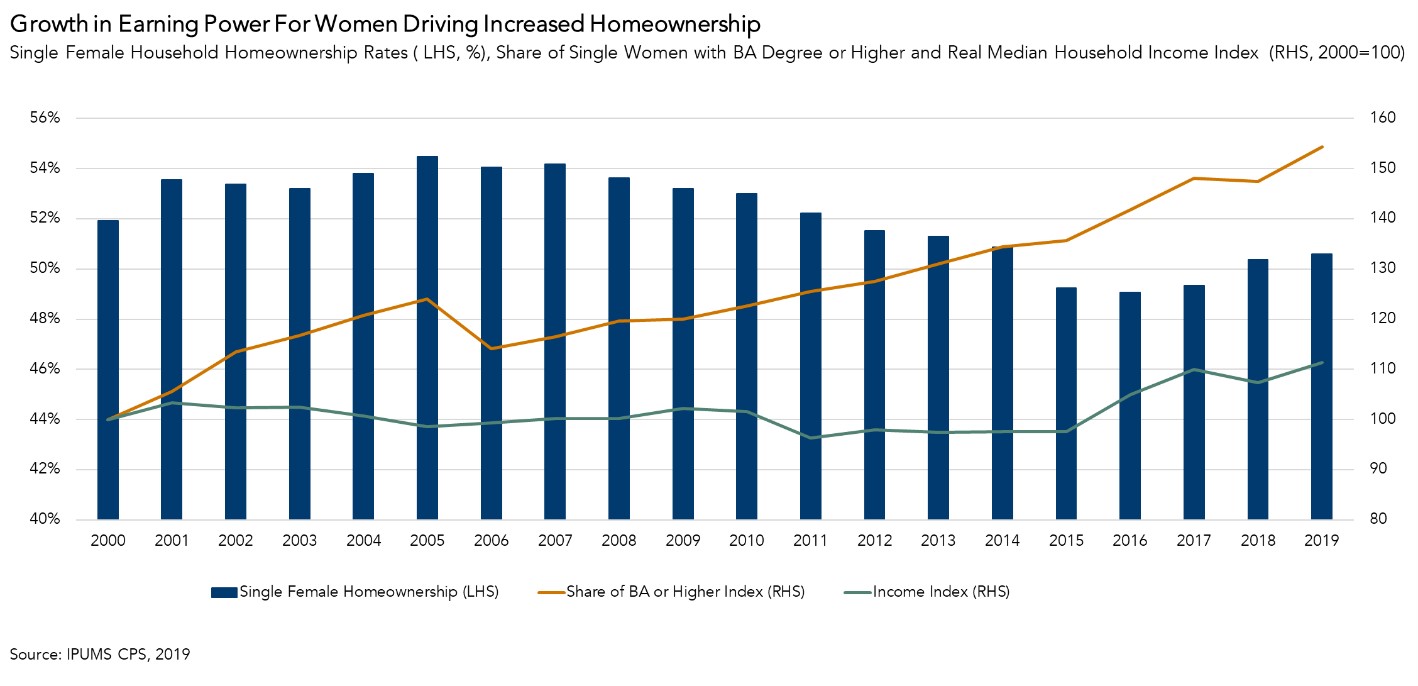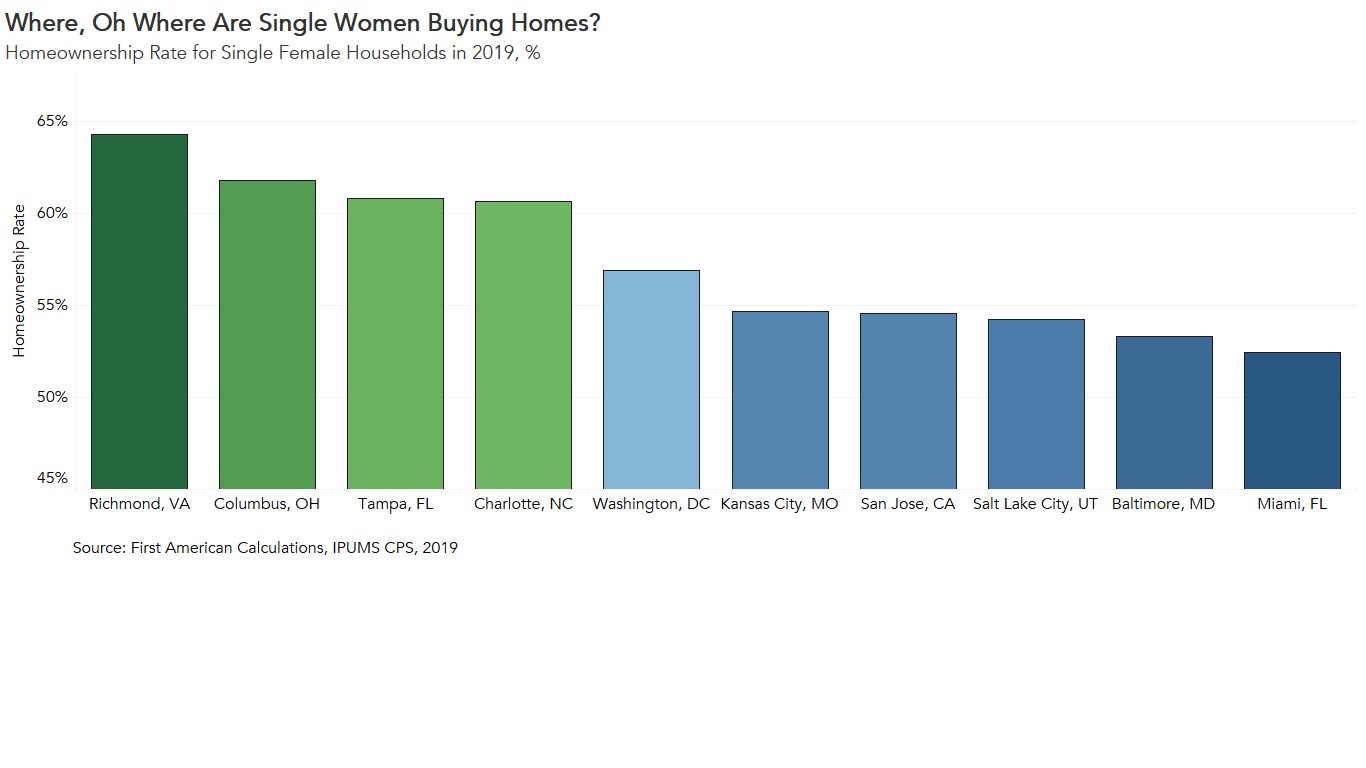As we enter National Homeownership Month, it’s important to reflect on the long-term trends in one of the main tenets of the American Dream. Following an overall decline in homeownership in the aftermath of the Great Recession to a low point of 63 percent in 2016, the homeownership rate has rebounded significantly to 65 percent in 2019. Interestingly, single women are a major reason why homeownership has been on the rise since 2016.
“Single women are dispelling the traditional notion that buying a home follows love and marriage. As women’s earning power continues to rise, it seems first comes homeownership.”
In 2019, the homeownership rate for single women (including widowed, separated, or divorced) was 2.2 percent higher than single men, according to anonymized household-level survey data. Differences between how single women and men prioritize homeownership may help explain why the homeownership rate among women exceeds men. One 2018 report by Bank of America found that single women prioritize owning a home more than their single male counterparts (73 percent vs. 65 percent). They’re also prioritizing homeownership over many key life priorities, such as getting married (41 percent) and having children (31 percent). Homeownership is a key tool for wealth creation in the United States, and single women are increasingly choosing to invest in homes and embracing wealth creation through home buying.
Single Female Homeownership Makes a Comeback
The single female homeownership trend has largely followed the national homeownership rate, increasing in the early 2000s and peaking in 2005, before falling in the aftermath of the recession. According to our analysis, the homeownership rate for single women has increased from a 20-year low of 49 percent in 2016 to almost 51 percent in 2019. An impressive improvement in just three years, and a faster average annual rate of growth than the overall national rate. Mortgage data from Freddie Mac confirms the rising demand for homeownership from single women, as the percentage of their purchase mortgage customers who are single women has risen 30 percent from 2010 to 2019.
Growth in Earning Power for Women Driving Increased Homeownership
We know from previous research that higher educational attainment results in higher household income, and higher income improves the likelihood of homeownership. This remains true among single women – as educational attainment and household income have increased for single women, so has the homeownership rate. The homeownership gap between single women with no high school degree or just a high school degree versus those with a bachelor’s degree or higher was 7 percent in the year 2000 and is now 9 percent.
Women with higher levels of educational attainment tend to earn more and are more likely to be homeowners, and women have increasingly pursued higher levels of education over the last two decades. The share of single women with a bachelor’s degree or higher has increased from 20 percent in the year 2000 to 31 percent in 2019. The share of single women with a graduate degree has more than doubled in the same timeframe. Similarly, median household income among single women has increased at an average annual pace of 0.6 percent from 2000 through 2019, double the overall national average pace of 0.3 percent.

Where, Oh Where Are Single Women Buying Homes?
The trend generally remains the same in the top 50 metropolitan markets we track. Single women homeownership increased in 24 of the top 50 markets in 2019 compared with 2018. Homeownership rates for single women in 2019 were highest in: Richmond, Va., Columbus, Ohio, and Tampa, Fla.
The top 10 list includes both smaller, less expensive cities, and larger, more expensive cities. While affordable cities give women more bang for their housing buck, larger, more expensive cities tend to have a higher concentration of high paying jobs that require higher levels of educational attainment. The takeaway, however, is that single women are not to be discounted in the housing market anywhere.

First Comes Homeownership
As educational attainment and household income for women continue to rise, we can expect increased homeownership to follow suit. Getting married and having children have been shown to be key lifestyle decisions that increase the likelihood of homeownership, yet it seems single women are dispelling the traditional notion that buying a home follows love and marriage. As women’s earning power continues to rise, it seems first comes homeownership.



